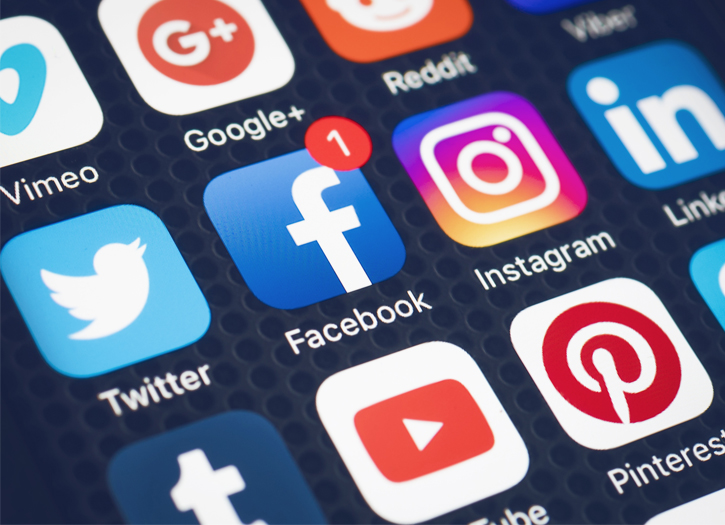The COVID-19 pandemic has affected the usage of social media by the world’s general population, celebrities, world leaders, and professionals. Social networking services have been used to spread information.
Social media has seen a sharp increase in use during the pandemic, largely due to social distancing measures encouraged by many governments. Since many people are asked to remain home, they have turned to social media to maintain their relationships and to access entertainment to pass the time. Moreover, social distancing has forced lifestyle changes for many people, which can put a strain on mental health.
Multiple social media websites reported a sharp increase in usage after social distancing measures were put into place. Since many people cannot connect with their friends and family in person, for the time being, social media has become the main form of communication to maintain these valuable connections. For example, Facebook’s analytics department reported over 50 percent increase in overall messaging during the last month of March 2020.
Particularly in countries where the virus was hit hardest, such as China, online mental health services received a surge in demand. This is because COVID-19 has forced many difficult and unplanned lifestyle changes, which are never easy to adjust to. In China, medical staff has used social media programs like WeChat, Weibo, and TikTok to roll out online mental health education programmes.
Many Internet memes have been created about the pandemic. A Facebook group has even been created as a space for young people (predominantly Generation Z) to share memes they create and find about the pandemic. The group is called “Zoom Memes for Self Quaranteens,” playing on pun of the increase in Zoom usage and self-quarantining as teenagers, and has over 500,000 members as of April 2020. The group serves as entertainment for the hundreds of thousands of young people that have been forced to switch to online school, helping them pass the extra time and help cope with the situation.
Social media has been used by news outlets, organizations, and the general public to spread both valid information and misinformation about the pandemic. The CDC, WHO, medical journals, and health care organizations have been updating and spreading information across numerous platforms with partnerships with Facebook, Google Scholar and Twitter. Others such as an attending emergency medicine physician in the New York hospital system have been using their social media accounts to report firsthand accounts of working to combat COVID-19.
MIT Technology Review has called the coronavirus pandemic “the first true social-media ‘infodemic'”. National Geographic has reported on an increased level of “fake animal news” on social media during the pandemic. Studies in the past have shown how people have stopped getting their information from browsers, and other search methods in favor of relying on social media. Political bots are a popular way of spreading misinformation and propaganda, as well as manipulating the opinions of people.
Social media has also contributed to the spread of misinformation. In Wuhan, China’s panic has led to the spread of misinformation as well as the disease itself. Misinformation has been spread in the form of reports that fireworks will kill the virus in the air, as well as vinegar and indigowoad root curing an infection. This misinformation was spread via the messaging app WeChat. Citizens have also bought an excess of materials and supplies, which has depleted the number of supplies available to professionals. Old and unsubstantiated information has also been spread as factual, seen with the rise of the reported benefits of Hydroxychloroquine, even though the WHO has ended trials around the product as it may increase the risk of patients dying from COVID-19.
During the pandemic many celebrities took to social media to interact with their fan bases and attempt to alleviate the situation through posts, acts of kindness or trends.







Add Comment
You must be logged in to post a comment.